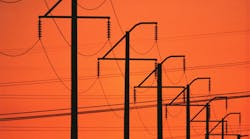In the 2017 National Electrical Code (NEC), there are plenty of tap rules in Sec. 240.21 and Sec. 240.92 for circuits not more than 1,000V. The same is true for transformer secondary conductor rules. Of course, if the tap rules and secondary conductor rules are used, then all of the qualifying criteria and conditions must be met for both taps and secondary conductors. However, all of these tap rules and secondary conductor rules only apply to circuits not more than 1,000V. There are no similar tap rules or transformer secondary conductor rules for circuits greater than 1,000V.
For medium- and high-voltage taps, it is evident there isn’t an allowable reduction in the size of conductors. The only mention of a tap for circuits greater than 1,000V is in Sec. 240.101(B) where it states: “(B) Feeder Taps. Conductors tapped to a feeder shall be permitted to be protected by the feeder overcurrent device where that overcurrent device also protects the tap conductor.” So when tapping a medium- or high-voltage conductor, the tap would effectively be required to be the same wire size as the tapped conductor. But it can get more complicated than just making the tap the same size as the tapped conductor. For instance, short-circuit calculations and protective device settings would need to be developed to ensure that a fault on a tap conductor can indeed trip the overcurrent device.
As far as medium- and high-voltage transformer secondary conductors are concerned, it is very common for voltages of 4.16kV and 13.8kV to employ cable bus or bus duct from the secondary terminals of the transformer to the main overcurrent protective device in the downstream switchgear without overcurrent protection at the transformer secondary terminals. This is allowed by Sec. 240.100, which allows these circuits to be designed under engineering supervision. The engineer will do short-circuit calculations and protective device settings to ensure that the secondary conductors are protected.
It should be noted, there isn’t a definition for “engineering supervision” in the Code. However, it is typically interpreted to mean supervision by a qualified, licensed, professional engineer.
© 2017 Fluor Corporation. All Rights Reserved.



